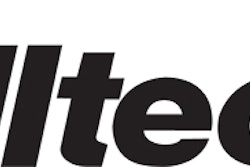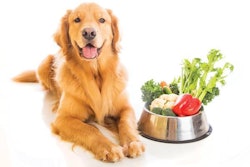Pet care and petfood are still strong economic sectors in Western Europe, despite financial struggles in some countries, with the region accounting for about 30% of the total US$98.3 billion pet care market, according to Euromonitor International. While much smaller, Eastern Europe, at about 6% of the global market, is growing quickly.
Petfood professionals from Europe and around the world can learn the latest petfood data and information during Petfood Forum Europe 2015. This exclusive conference also offers prime networking and the chance to connect with leading industry suppliers exhibiting at Victam International/FIAAP/GRAPAS.
Scheduled for June 10 at the Koelnmesse in Cologne, Germany, in conjunction with Victam/FIAAP/GRAPAS, Petfood Forum Europe features industry experts presenting new research on petfood ingredients, palatability, packaging safety and production. Following are the schedule, topics and speakers as of press time. For updates and registration information, visit PetfoodForumEvents.com.
Wednesday, June 10, 2015
9:00-10:00 Registration/check-in with light breakfast
10:00-10:40 Differentiation on the shelf: petfood packaging design that captures market share —Stefan Hartung, executive creative director for Ideas That Kick, explains how to create petfood packaging design concepts that differentiate your brand in a crowded, competitive market. Using international examples, he describes how to analyze competitive shelf sets for petfood-specific packaging, identify market and mindset opportunities, and stand out on the shelf by speaking to consumers with benefit messaging.
10:40-11:20 Insect protein meal: a safe, sustainably produced source of nutrients for innovative petfood applications —Tarique Arsiwalla, founder and director of Protix Biosystems BV, provides insights into how insects can play a pivotal role in food chains, turning end-of-life streams into valuable high-grade nutrients that can benefit the petfood industry while complying with strict guidelines in European Union legislation. Within those guidelines, ingredients have been produced with various functional applications, including dog food.
11:20-12:00 Measuring emotional palatability —Christelle Tobie, Panelis business development manager for SPF-Diana Pet Food, explains why palatability, defined to date as an organoleptic concept, has now become emotional as the petfood market faces new challenges: understanding pets’ behaviors related to their feeding experience and understanding the “parents’” perceptions of their pets’ feeding satisfaction. Tobie and her colleagues have investigated this new dimension to define the relevant criteria to measure emotional palatability.
12:00-13:30 Petfood Forum Europe lunch
13:30-14:10 Ensuring safe petfood in the 21st century: protecting your brand equity, your customers and our pets —David Primrose, MSc, technical consultant for Synergy Food Ingredients, delivers insights into how brand equity shapes our thinking on petfood safety and illustrates the importance of evolving our food safety management approach to ensure field-to-bowl protection. Recognizing food safety culture as an emerging risk factor, the presentation introduces a model for petfood safety built on food industry best practices and learnings.
14:10-14:50 Seasonal rhythms in food intake, body weight and activity in the domestic cat —David G. Thomas, PhD, senior lecturer at Massey University, describes new research into how cats still show a strong seasonal rhythm in food intake, despite domestication and the provision by owners of a consistent food supply. Most domestic cats are exposed to natural daylight and temperature changes during the year, yet little research to date has looked at the consequence of this on appetite and food intake, body weight and activity.
14:50-15:30 Effects of caprylocapric triglyceride supplementation in cats —Melinda Fernyhough Culver, DVM, PhD, scientific affairs manager-biosciences for Abitec Corp., reports the results of a study on supplementing cats’ diets with caprylocapric (medium chain) triglycerides, a unique type of fat due to their digestion, absorption and metabolic pathway. A considerable amount of data suggest that supplementing human and other species’ diets with these triglycerides can diminish fat; yet there has been little focus on pets despite the progression of pet obesity to epic levels worldwide.
15:30-16:00 Coffee break
16:00-16:40 Thermal versus mechanical energy in petfood extrusion to boost meat levels and save energy —Brian Streit, director of pet food & aquatic technology for Wenger Manufacturing, explains how the continual rise in energy costs and the trend to include higher levels of fresh and dried meat in petfood formulations have combined to provide a new way of extrusion cooking: using higher levels of thermal over mechanical energy. This method offers many benefits in energy reduction, formulation flexibility, palatability, digestibility and more.
16:40-17:20 Benefits of feeding algae as an antioxidant and omega-3 ingredient for dogs —Terry McArdle, European pet manager of the Alltech European Biosciences Centre, presents information and research on microalgae as a source of protein, fat and nutrients and a viable option to the challenge posed by food production growing slower than human demand. Studies suggest that supplementing canine diets with DHA from marine sources can improve cognitive, memory, psychomotor, immunologic and retinal functions in growing dogs and help reduce aggressive behavior in adult dogs.















